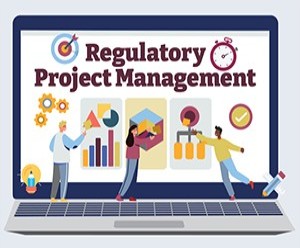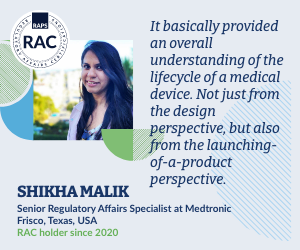FDA Preps for Increasing Volume of Products Imported Into the US
![]() Regulatory News | 14 December 2018 |
Regulatory News | 14 December 2018 |
With the volume of US Food and Drug Administration (FDA) regulated products imported into the US surging each year, the agency has been working on a more strategic approach to its regulation on imports by establishing several new systems for industry and agency staff.
FDA’s imports program faces an increasingly challenging situation at the border, Division of Import Operations (DIO) Director John Verbeten noted Wednesday at a Food and Drug Law Institute conference on enforcement, litigation and compliance. The current shipment-by-shipment approach to import regulation needs to change, he argued, citing the growing volume of imports, relatively new regulatory considerations around emerging medical technologies and FDA resources, among other issues.
The 42 million FDA-regulated products imported into the US in fiscal year (FY) 2018 was a major undertaking for the 500 import investigators , noted Verbeten. This left little time for import investigators to focus on other priorities they may have had, he said, adding that FDA expects to see 45 million product lines imported into the US in FY 2019.
The agency has been aware for several years that its “job of protecting consumers includes an ever-increasing need to oversee imports” as these have been “increasing by 5-10% per year for the last decade, and those percentages expect to keep rising.” These yearly increases in FDA-regulated imports, which include drug products, medical devices and technologies, as well as food and tobacco products, is reflected in the graphic below from the agency’s import program.

The spikes in the data suggest a potential shortfall of FDA resources to oversee the growing import volume. Newer products factor into FDA decision-making on imports, including medical apps and greater use of e-commerce. The import program is also relying on the information provided by the manufacturer of an imported product, which can just be a portion of the product’s profile.
Verbeten argued these issues underscore the need for a new approach to how FDA oversees imports. He advocated for a systematic approach that allows FDA to know more about and have better information on products before they get to the US, especially when they come from countries that do not have FDA’s assurance of safety and effectiveness.
“We have to be more strategic with what we’re doing when it comes to products of foreign origin imported into the US” because there are many more imports now and this will continue to grow but FDA’s resources “aren’t necessarily going to keep up,” Verbeten said. FDA will soon reach up to 50 to 60 million lines of imported products and has to “figure out a way to deal with all of that volume,” he added. “It can’t be regulation through shipment-by-shipment anymore.”
Industry can expect to see FDA advancing new system-based approaches to dealing with the import volume as it seeks to have more information on a product prior to reaching the US border, said Verbeten.
FDA’s import program currently houses three electronic import systems for entry data and information that are intended to allow for better use of FDA resources based on risk. “We’ll look towards, as we go forward, to building more of those kinds of systems so that we have a better and more strategic application of the resources that we do have for imported products,” Verbeten said. The agency will seek to leverage additional sources of information, including foreign drug and device approvals and global supply chains, as part of these efforts, he added.
NSF International’s Kim Trautman noted there are already examples on both the pharmaceutical and medical device sides of FDA warning letters containing import detention or alerts that were issued over the past 15 years by “relying solely on another regulatory agency’s system.” FDA recently began leveraging audit reports generated via the Medical Device Single Audit Program to reach these kinds of decisions on products of foreign origin, Trautman added.
FDA’s imports program faces an increasingly challenging situation at the border, Division of Import Operations (DIO) Director John Verbeten noted Wednesday at a Food and Drug Law Institute conference on enforcement, litigation and compliance. The current shipment-by-shipment approach to import regulation needs to change, he argued, citing the growing volume of imports, relatively new regulatory considerations around emerging medical technologies and FDA resources, among other issues.
The 42 million FDA-regulated products imported into the US in fiscal year (FY) 2018 was a major undertaking for the 500 import investigators , noted Verbeten. This left little time for import investigators to focus on other priorities they may have had, he said, adding that FDA expects to see 45 million product lines imported into the US in FY 2019.
The agency has been aware for several years that its “job of protecting consumers includes an ever-increasing need to oversee imports” as these have been “increasing by 5-10% per year for the last decade, and those percentages expect to keep rising.” These yearly increases in FDA-regulated imports, which include drug products, medical devices and technologies, as well as food and tobacco products, is reflected in the graphic below from the agency’s import program.

The spikes in the data suggest a potential shortfall of FDA resources to oversee the growing import volume. Newer products factor into FDA decision-making on imports, including medical apps and greater use of e-commerce. The import program is also relying on the information provided by the manufacturer of an imported product, which can just be a portion of the product’s profile.
Verbeten argued these issues underscore the need for a new approach to how FDA oversees imports. He advocated for a systematic approach that allows FDA to know more about and have better information on products before they get to the US, especially when they come from countries that do not have FDA’s assurance of safety and effectiveness.
“We have to be more strategic with what we’re doing when it comes to products of foreign origin imported into the US” because there are many more imports now and this will continue to grow but FDA’s resources “aren’t necessarily going to keep up,” Verbeten said. FDA will soon reach up to 50 to 60 million lines of imported products and has to “figure out a way to deal with all of that volume,” he added. “It can’t be regulation through shipment-by-shipment anymore.”
Industry can expect to see FDA advancing new system-based approaches to dealing with the import volume as it seeks to have more information on a product prior to reaching the US border, said Verbeten.
FDA’s import program currently houses three electronic import systems for entry data and information that are intended to allow for better use of FDA resources based on risk. “We’ll look towards, as we go forward, to building more of those kinds of systems so that we have a better and more strategic application of the resources that we do have for imported products,” Verbeten said. The agency will seek to leverage additional sources of information, including foreign drug and device approvals and global supply chains, as part of these efforts, he added.
NSF International’s Kim Trautman noted there are already examples on both the pharmaceutical and medical device sides of FDA warning letters containing import detention or alerts that were issued over the past 15 years by “relying solely on another regulatory agency’s system.” FDA recently began leveraging audit reports generated via the Medical Device Single Audit Program to reach these kinds of decisions on products of foreign origin, Trautman added.
© 2025 Regulatory Affairs Professionals Society.













